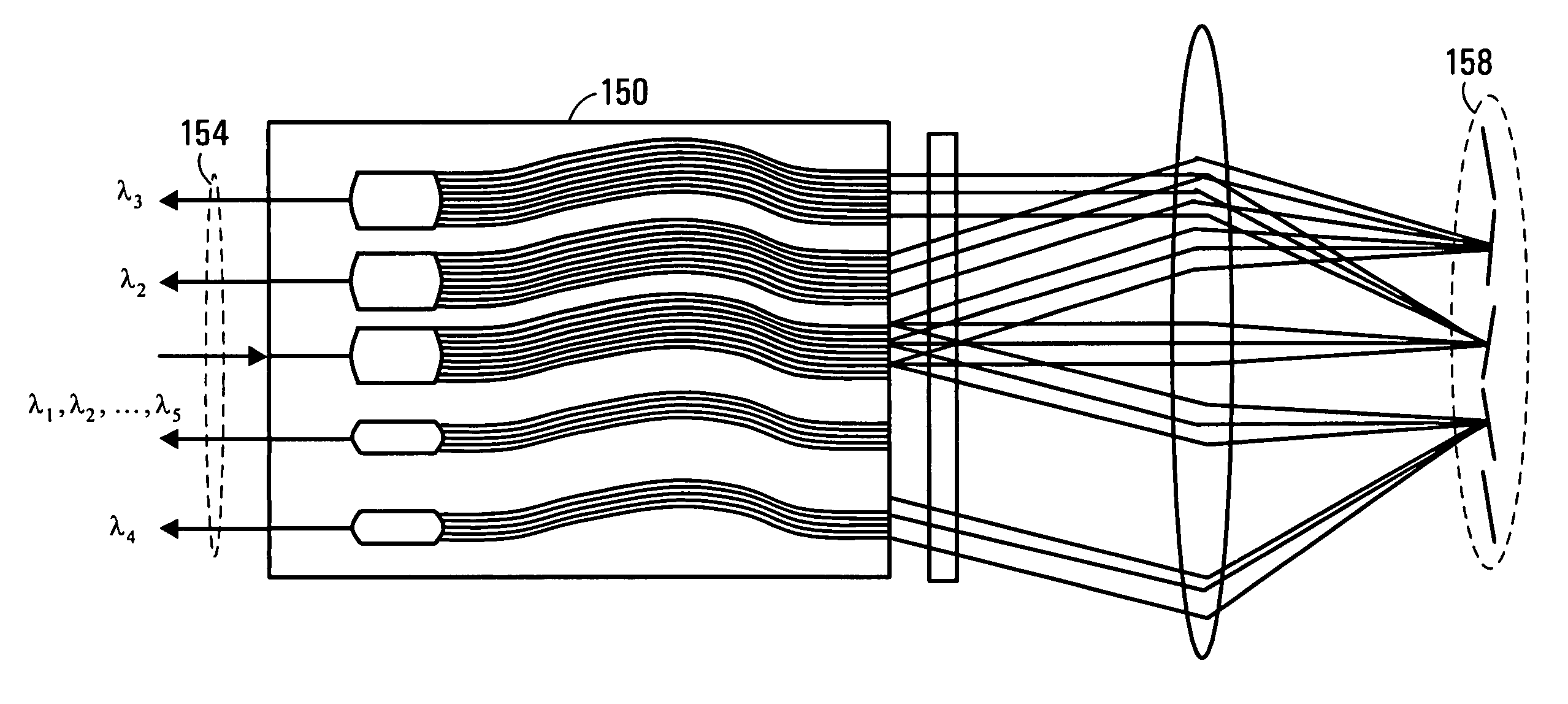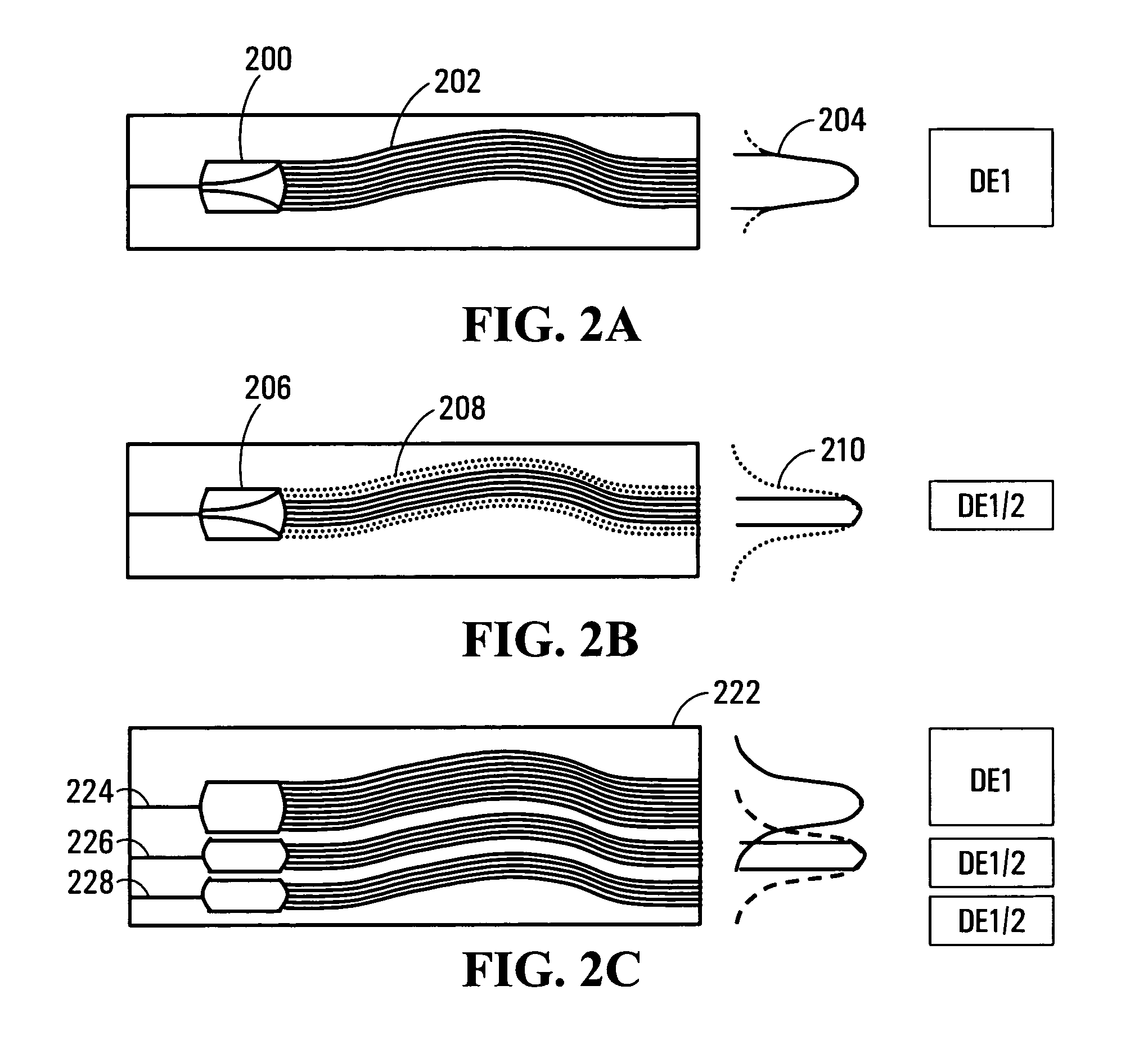Wavelength cross connect with per port performance characteristics
a cross-connecting and per-port technology, applied in the field of alloptical switching, can solve the problems of high cost of free-space optic solutions, limited wavelength range of serial filter embodiments,
- Summary
- Abstract
- Description
- Claims
- Application Information
AI Technical Summary
Problems solved by technology
Method used
Image
Examples
Embodiment Construction
[0045]FIG. 1 is a block diagram of a wavelength cross connect provided by an embodiment of the invention. The arrangement has a set of N input ports 10 (two shown, more generally at least one input port), and a set of M output ports 12 (two shown, more generally at least one output port, with at least two output ports in some embodiments). The ports can be in a single plane, or arranged in two dimensions. Per-port coupling optics are generally indicated at 14. There is a dispersive element per port, generally indicated at 16. Finally, there is a plurality of routing elements generally indicated at 18 for re-directing wavelength signals. If either N or M is equal to one, then the wavelength cross connect is a wavelength selective switch, a wavelength selective switch being a special case of a wavelength cross connect.
[0046]In operation, the port coupling optics 14 functions to couple light between the input and output ports 10,12 and their respective dispersive elements 16. For each ...
PUM
 Login to View More
Login to View More Abstract
Description
Claims
Application Information
 Login to View More
Login to View More - R&D
- Intellectual Property
- Life Sciences
- Materials
- Tech Scout
- Unparalleled Data Quality
- Higher Quality Content
- 60% Fewer Hallucinations
Browse by: Latest US Patents, China's latest patents, Technical Efficacy Thesaurus, Application Domain, Technology Topic, Popular Technical Reports.
© 2025 PatSnap. All rights reserved.Legal|Privacy policy|Modern Slavery Act Transparency Statement|Sitemap|About US| Contact US: help@patsnap.com



